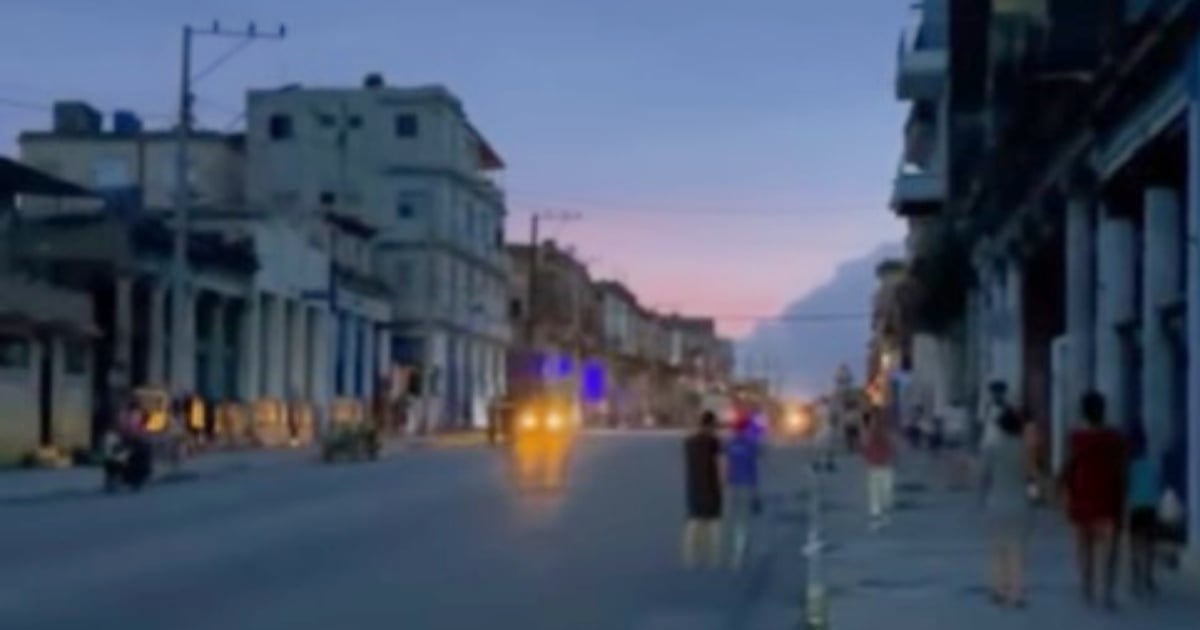
The Electric Company of Havana reported on the morning of this Monday that half of the customers in the capital now have electric service after the massive blackout that has kept the Electric Union on edge since noon on Friday, causing complete despair among the population of the capital and the rest of the country.
At this moment, 172 circuits are in service, which represents 317 MW and around 50% of customers with service, they indicated.
"We are working to ensure that more customers have electricity service, depending on generation capacities we will be able to do so. We ask the population to have confidence in our troops, we will not rest until 100% of the people of Havana have electricity service," they added.
In another post, they stated that they were aware of "the complexity of the situation."
"When we ask for trust from the Havana population, it is because our people do not rest in order for you to have electricity service," they added.
The state entity reiterated that the complete restoration of the service for consumers who still do not have it will depend on the generation capabilities of the system.
In addition, they reiterated the commitment of "the highest authorities of the country" and "the electric companies" to restore normalcy in the shortest time possible.
It was previously reported that, following the disconnection of the National Electric System on Sunday afternoon, the Electric Union (UNE) will implement a strategy to divide the electrical supply into several independent systems by regions.
This measure seeks to ensure the stability of the rest of the system in the event of future failures, as indicated on Facebook by journalist Lázaro Manuel Alonso on Monday morning, citing the state entity.
The western provinces up to Havana will receive energy mainly from the Mariel thermoelectric plant, which will be supported by the barge located in that area, fuel-based generation units, and the rest of the distributed generation in the western region, in addition to the Santa Cruz thermoelectric plant.
For the provinces of Matanzas, Cienfuegos, and Villa Clara, electricity will be provided by the Guiteras thermoelectric power plant, complemented by distributed generation in those provinces.
Regarding the central area of the country, the remaining provinces will receive electricity from Nuevitas and other distributed generation sites.
Meanwhile, in the eastern region, the electricity supply will depend on the Renté thermal power plant, the barge located in the bay of Santiago de Cuba, and the sites in Moa.
In addition, the Felton plant is expected to be incorporated soon to support the supply in that area.
This division of the electrical system into regions aims to reduce the effects of future failures and increase the energy stability of each area, amid an energy crisis affecting the entire island, as concluded by the official journalist.
Since last Friday at noon, when the complete outage of the SEN occurred, Cubans have been experiencing an overwhelming and extensive blackout that has paralyzed the country.
Although the regime has promised that it will find a solution, the crisis has escalated.
The so-called "shots" have caused more tension in the SEN, which is experiencing total or partial collapses, and thousands of Cubans continue to be without electricity.
On Saturday morning, during the recovery process of the SEN following the total blackout on Friday at noon, the system collapsed again. The electricity supply that had reached a few thousand users and powered the start-up of the thermoelectric plants through distributed generation disappeared once more, taking with it the hope of overcoming the crisis.
On the same day, the province of Matanzas experienced a general blackout after a "trigger in the startup of the electrical microsystem" occurred.
Significant breakdowns have also been reported at Unit 3 of the Carlos Manuel de Céspedes Thermal Power Plant in Cienfuegos, and at Generation Block No. 3 of the Antonio Maceo Thermal Power Plant, also known as Rente, in Santiago de Cuba. As a consequence of the latter, a microsystem failure occurred that affected the provinces of Santiago de Cuba and Guantánamo, leaving them without electric service.
What do you think?
COMMENTFiled under: